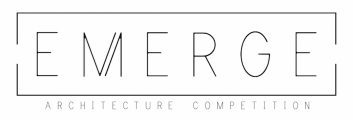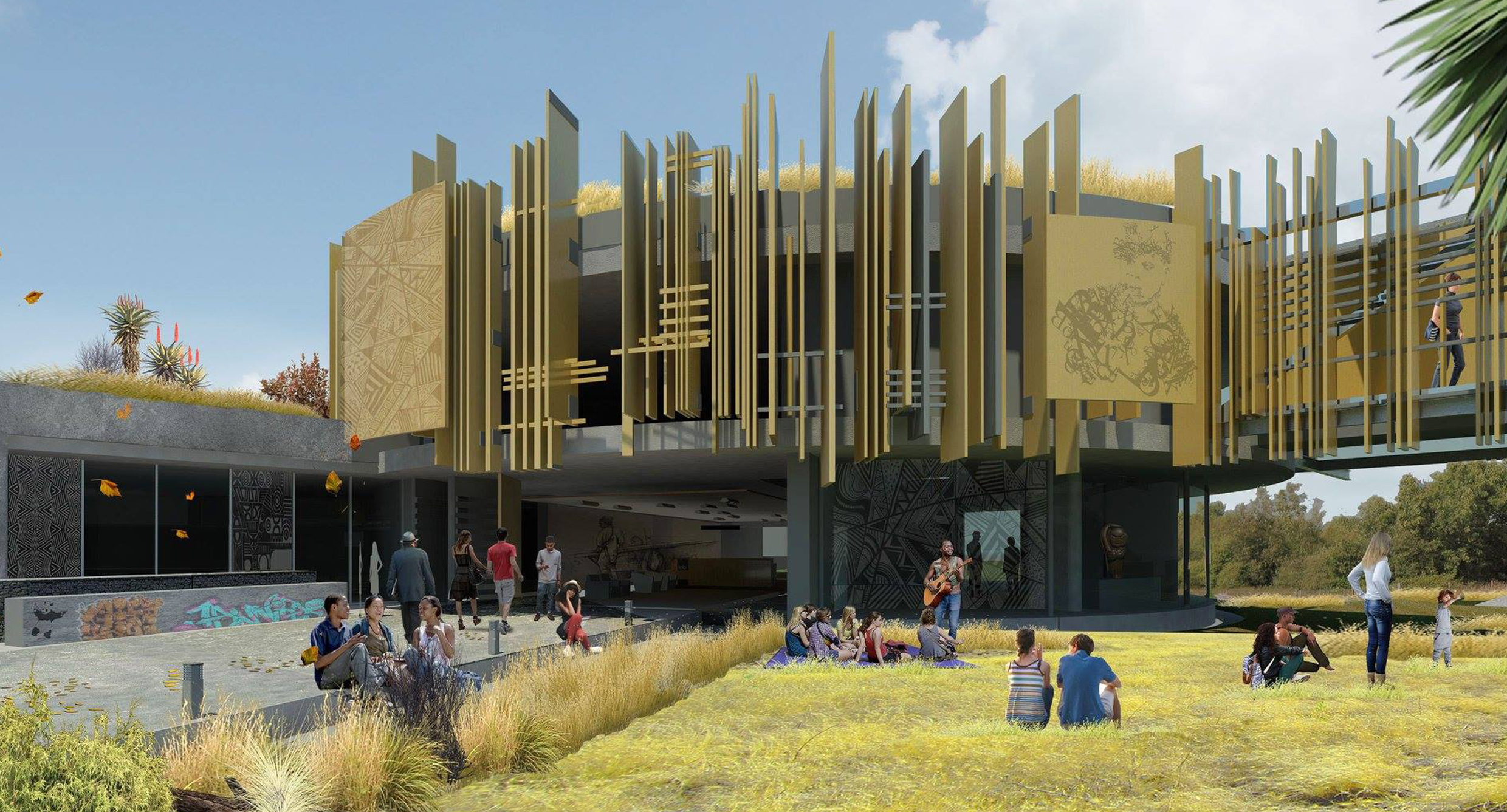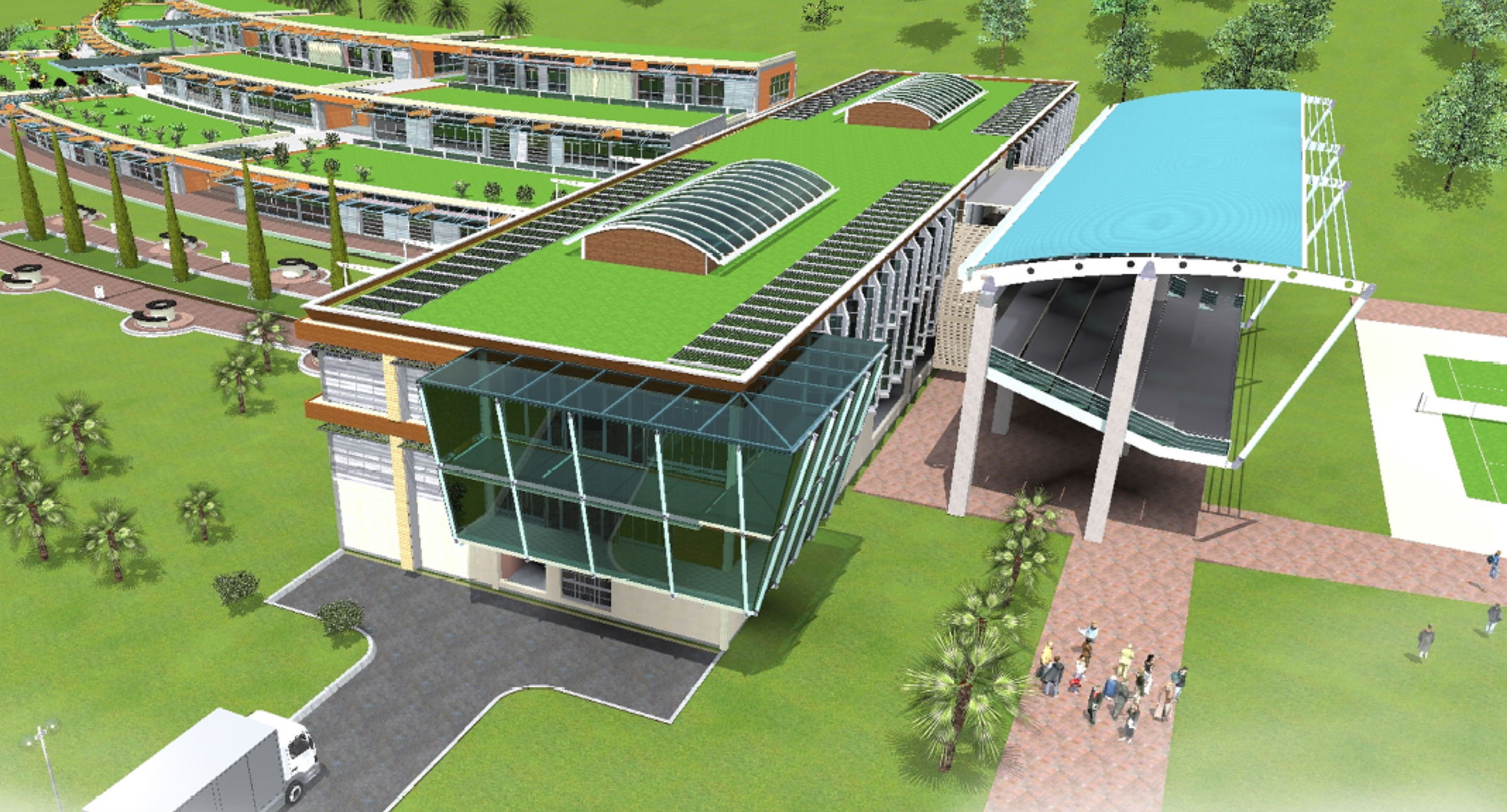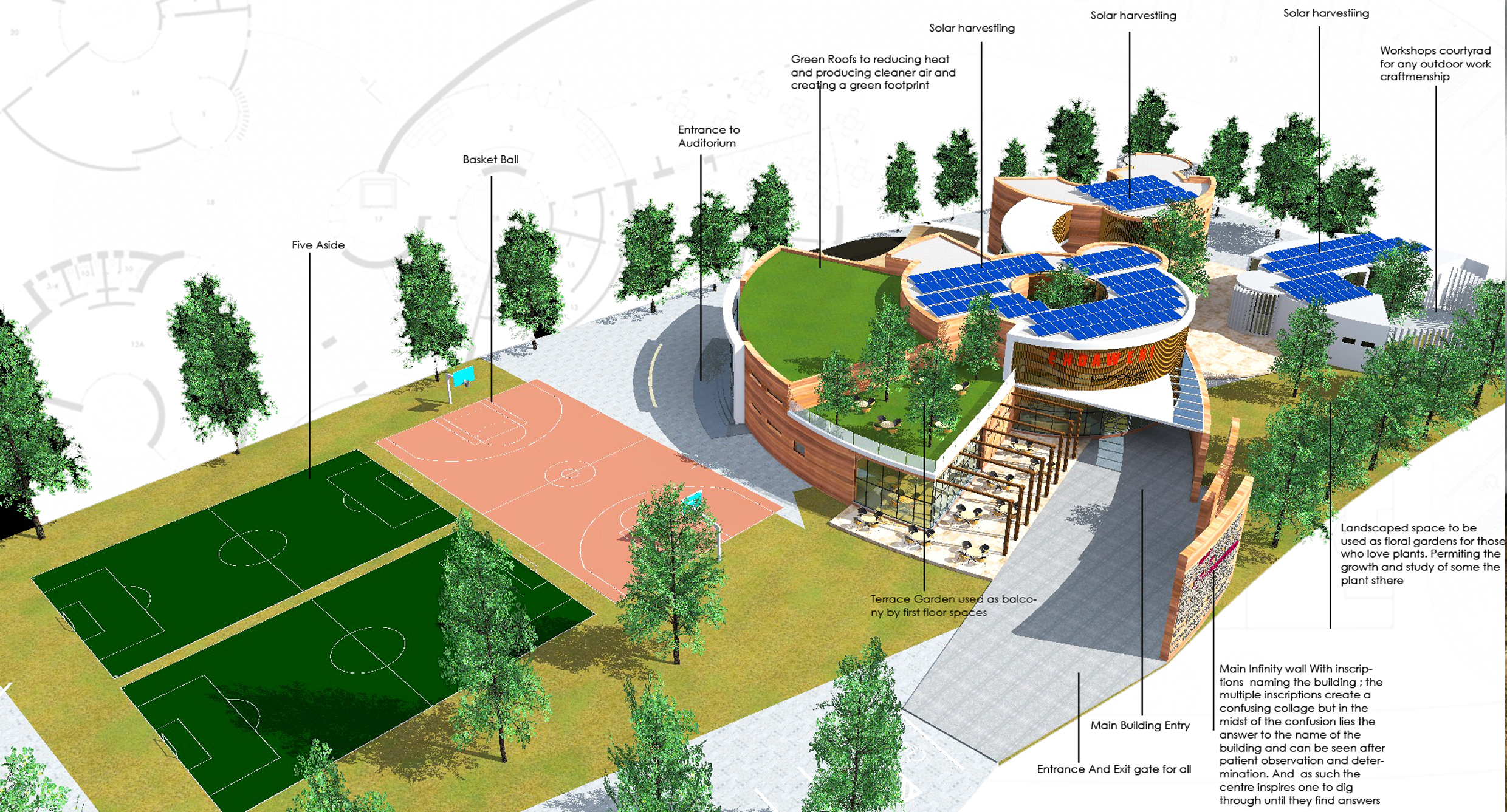1ST: VERNEY MOYO
DESIGN INTENT
In truth, architects are more creators of space than of built-form. It is this enigmatic, intangible quality that the Nest attempted to perfect and embody in its design and composition.
Drawing inspiration from rural Africa and informed by existing patterns and features on site, the building seeks to utilise the present, while at the same time suggesting something novel. Being located in a city park close to pre-existing structures (The National Museum of Natural History) of both historical and cultural import; a careful articulation of form and a good sensitivity of sustainable building strategies were paramount in my design approach.
With a diverse programmatic schedule the design grew into a conglomerate space in which spatial conventions were challenged. The restaurant space arched over a prominent highway; thereby obtaining good light in the mornings whilst commanding a majestic view of the surrounding suburbia. Many breakaway spaces, lecture rooms on the ground floor, and a workshop area in the schemes South Wing were included to address the problem off unemployment in Zimbabwe; being designed to optimize peer/mentor interactions and multi-valance. The materiality tries to make use of as much recycled material as possible; using repurposed steel and wood scaffolding for the cladding systems, and replacing conventional masonry with rammed earth and hempcrete. From this assemblage of materials the nest aesthetic was born; with the exterior closely resembling a buffalo-waver nest during the dry-season.
The Nest in essence a structure that attempts to have a low profile; benign in its general impact on the Bulawayo skyline whilst existing in a state of symbiosis with its context. Its location was chosen to commemorate the citys architectural heritage in the form of the pre-existing Lions Pool, whilst aiming to foster a relationship with the museum that would see the youth taking a greater interest in our Nation’s natural history.
DESIGN INTENT- PDF DOWNLOAD
PANEL 1- PDF DOWNLOAD
PANEL 2 – PDF DOWNLOAD
2ND: TICHAONA GONDO
CHALLENGE
There are high levels of unemployment and underemployment in the country. Currently there are few centres/facilities that offer skills, work experience and business advice to youth for nation building.
DESIGN INTENT
Commissioned to design a youth and entrepreneurship centre, the facility is aimed at improving the participation of youth in enhancing the national economy. The design incorporates skills training and social interaction.
DESIGN THEME/CONCEPT: ELEVATING THE YOUTH
Inspired by the need to enhance the Zimbabwean youths socio-economic status, the building form, landscaping and spatial configuration are to reflect the theme Rising Youth. Hence a sloping site was chosen to give a sense of ascension to the facility.
SITE LOCATION AND MORPHOLOGY
The site is located in Grand Reef, approximately 40 km north-west of the city of Mutare. The area is situated in the rural-urban fringe of the city.
SITE STRENGTHS-
-A favourable wind prevalence to initiate wind farming, an alternative source of power to the centre and surrounding communities.
-Proximity to Osbourne Dam in the northern side for supply of water to the site.
-High levels of solar radiation almost throughout the year are ideal for solar power systems on the centres roof systems and from the ground.
-Sloping site favourable for rain water harvesting for storage.
BUILDING TECHNOLOGY
-Adaptable Internal wall design: Demountable internal walling systems in workshops and training rooms to allow flexibility for space usage shown in Section A-A
-Thermal massing: Double brick walling system to retard high levels if insolation, thereby keeping the indoor spaces at optimum temperatures
-Climate-responsive facades: Use of modern glazing systems which can actively moderate the amount of natural direct light admitted into the internal spaces. They respond when there is excessive glare. The glazing system in used in the auditorium, performing arts session of the centre
-Passive sun-shading system: Use of deep recess in window and door openings
-The design of the facility incorporates sun mild steel shading panels
BUILDING MATERIALS
Locally available: granite stone (available from Zimunya), brick masonry, timber (penhalonga). Imported materials: climate responsive structural glass, retractable walling systems for flexibility.
DESIGN INTENT- PDF DOWNLOAD
PANEL 1- PDF DOWNLOAD
PANEL 2 – PDF DOWNLOAD
3RD: PROUD DUBE
CONCEPT
The concept comes from traditional architecture which is eccentric and circular. Using curves, triangles, the golden section along and the golden spiral to link everything, the concept strives to inspire the youth in loving their heritage cause if ever they are to rise to prominence a belief in themselves and their history plays a pivotal role.
LOCATION
The Project is located in Bulawayo along Matopos road; Fifteen Avenue; Stockton Street and Dorchester Road. As the project seeks to inspire all youth of different cultures and backgrounds a central and unbiased location to any community was chosen hence the city centre. The other major reason is most entrepreneurs and businesses are located there hence making it any easy way to bring the youth of Bulawayo close to their business community and easily showcase their products and ideas.
CONSTRUCTION AND TECHNOLOGY
Following in the lines of thought from the concept the proposals main walls are that of Rammed earth, doing this as a way of inspiring an elevation and appreciation of locally available materials in their simplest form. This is to help the youth realize that even with their simple means they can still come with something. The proposal in terms of size tends to follow in the thinking of the great Zimbabwe builders in creating a monumental architecture in the simplest way. The rest of the walls are constructed of hydraform interlocking blocks. The building shall produce a majority of its own energy and use water harvesting systems to claim as much rain water as is possible. The use of courtyards and gardens and openings all round increase natural ventilation and reduce the use of air conditioning. The use of gumpole strips as solar screens reverts back to borrowing from the vernacular architecture.
DESIGN INTENT- PDF DOWNLOAD
PANEL 1- PDF DOWNLOAD
PANEL 2 – PDF DOWNLOAD
HIGHLY COMMENDED: MTHOKOZISI SIBANDA
RE-PURPOSE
Unemployment of the youth in Zimbabwe is a crisis that has increasingly led to many youths losing Hope for the country. Most of the youths do not realise their potential and thus fail to envision the certainty of their future as they live far below their potential.
Plumtree is a small emerging town on the south-western side of the country. There are a number of abandoned warehouses that stopped functioning because of the economic crisis. Some have fallen into ruins because of lack of function.
Architecture wont literally create employment for all the youths, but it can metaphysically unlock their potential to realise the possibilities from what is around them.
From a survey of the youth in Plumtree, I noticed that their main concern is that, they dont have anything to do, but at the same time, they want to be heard.
This proposal aims to re-purpose an abandoned factory along Kingsway in Plumtree, into a youth and entrepreneurship centre. Its new purpose is to enhance the skills of the youth and enable social change to discover their potential through the empowerment of the local youth.
From my research, most youth centres have turned into white elephants as they are not enticing enough for the youth to spend their time there, thus my design facilitates the needs of the modern youth.
This thesis stresses the essence of synthesis and necessity in design, especially in such times of crisis through the minimalistic choice of materials such as wire-mesh for interior partitioning.
This proves that space has the capacity to push the mind, rejuvenate the spirit and help realise the possibilities. It also brings forward a sustainable idea, that the youth can re-purpose what is around them, that which has been abandoned, for a better purpose, thus proving the metaphysics of space to human life.
DESIGN INTENT- PDF DOWNLOAD
PANEL 1- PDF DOWNLOAD
PANEL 2 – PDF DOWNLOAD



